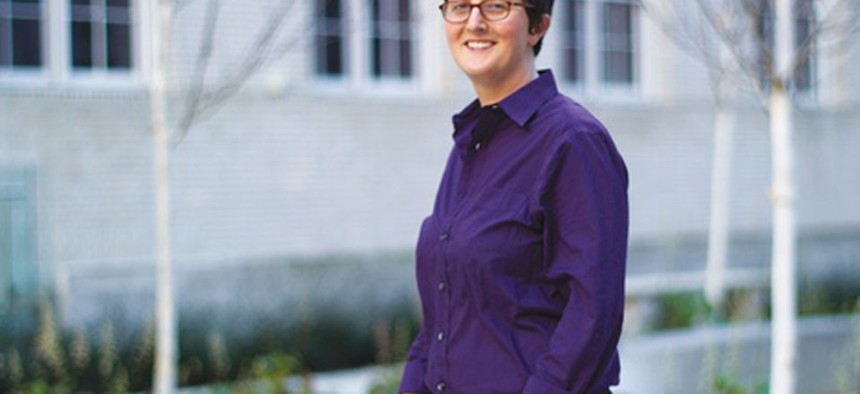18F’s Hillary Hartley on Redesigning Government Services: Put the People First

Jeff Singer
As deputy executive director of GSA’s digital services team, Hillary Hartley’s job is to put customers at the forefront of any technology project.
This article was originally published in a shortened version on March 13. The article has been expanded.
As the deputy executive director at 18F, the federal government’s digital services delivery team, Hillary Hartley’s job is to put end users at the forefront of any technology project.
The bit of irony for this small-town Kansas gal turned big-city tech innovator is that if 18F -- part of the General Services Administration -- is truly successful in instilling best digital practices across government, Hartley and the rest of 18F’s growing bicoastal team might just work themselves out of a job.
Of course, that’s unlikely given the government plans to spend $86 billion on information technology this year alone. What’s more likely, however, is 18F gradually imbuing agencies with user-centric, data-driven principles. The result: digital services designed to meet both government missions and user expectations.
“What we settled on as the true transformative concept for how to create change in government and redesign government is that concept of user-centered design,” says Hartley, speaking from her San Francisco home near 18F’s West Coast offices. “We put the needs of citizens, residents and the people of America first . . . The federal government is a prime market mover. If some stuff we make works well and people want to steal it, that’s awesome.”
A Self-Taught Technologist
Hartley’s unconventional tech background helped foster her design-centered approach.
Raised in rural Baxter Springs, Kansas, Hartley was “always a math and science geek,” and her father’s penchant for modern gadgets fanned the flame, she says. A self-taught technologist, she studied sociology at Smith College, a small liberal arts schools school in Massachusetts. She worked in tech support on the side and taught herself HTML.
One of her first forays into user-centered design at Smith came when she helped transform the school’s low-tech career-matching system -- then based on index cards of interests and correlating careers -- into a full-fledged online career database.
Hartley continued developing her coding and design skills on the side after college, wound up in New York as the creative director at a small startup company that focused on producing services for government customers. She built Web pages before the dot-com bubble burst, although, she said, “keeping her ear to the ground” for services that might translate well to government “was basically half the job.”
Presidential Innovation Fellowship: ‘A Watershed Moment’
She eventually parlayed her skills and experiences into a Presidential Innovation Fellowship, where her star began to really shine.
She’d heard rave reviews from alumni of the inaugural PIF program and decide to apply at the last minute.
“I submitted by PIF application in the 59th minute, but I’m very glad I did,” Hartley says. “It was a watershed moment for me. I got lucky. I don’t think I’m exceptionally talented as an artist or designer, but I have a good enough eye to make things look nice and work well for people.”
Once accepted, she played a major role in the development of the MyUSA project, a joint effort between the White House and General Services Administration to provide a single online portal for Americans to access government services.
Her “tour of duty” in the PIF program also helped forge relationships that eventually culminated in the creation of 18F last year.
Her approach to digital services mirrors that of 18F’s -- for the people. Hartley wants agile, open, transparent, data-driven digital services.
Still, the biggest factor is, will they work for the people who need them?
“I think if we have done our jobs so well being an advocate for good practices and being educators and empowering people we work with to learn how to do the things we do, and if we’ve done that part of the job so well that we don’t need to exist because they’ve learned to better work for vendors or to do things on their own, then that’s a win,” Hartley says.



